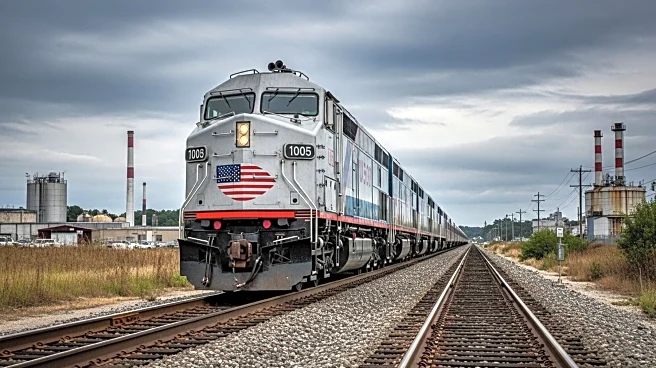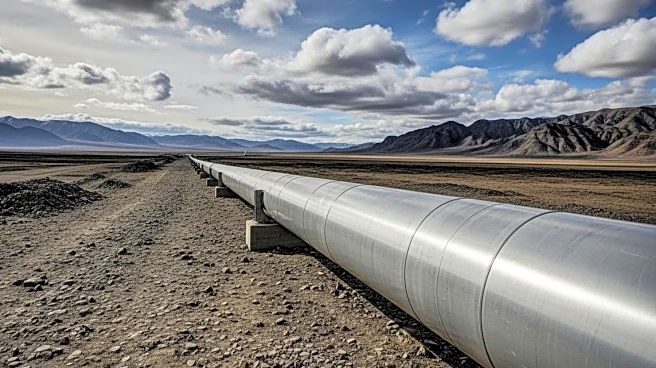What's Happening?
CSX Corporation's recent financial performance underscores significant challenges within the U.S. railroad sector. In the first half of 2025, CSX reported declining operating income and revenue, primarily due to reduced coal demand, lower fuel surcharges, and weaker merchandise volumes. This situation reflects a broader industry dilemma as traditional energy dependencies clash with AI-driven industrial shifts and the global energy transition. Coal, a critical revenue source for CSX, is losing relevance as global markets increasingly favor renewable energy. Despite a slight rise in U.S. domestic coal consumption due to data center growth and electric vehicle demand, export coal volumes face challenges, particularly with China and India reducing thermal coal imports. CSX's AI investments have improved efficiency but lag behind competitors like Union Pacific and BNSF, which are leveraging AI for emissions-cutting innovations.
Why It's Important?
The challenges faced by CSX highlight the broader implications of the energy transition and AI-driven industrial changes on the U.S. railroad sector. As coal demand declines, railroads must adapt to shifting freight patterns and invest in cleaner technologies. The sector's reliance on coal, which accounted for 35% of global rail freight volumes in 2025, is increasingly unsustainable. While domestic coal demand has stabilized, export markets remain volatile, creating a precarious balance for railroads. The adoption of AI technologies offers potential efficiency gains, but companies like CSX must accelerate their digital transformation to remain competitive. The industry's ability to navigate these changes will impact its long-term sustainability and profitability.
What's Next?
For CSX and the broader railroad sector, the focus will likely be on accelerating the transition to sustainable, AI-optimized operations. This includes investing in electrification and other clean technologies to reduce carbon footprints and maintenance costs. Additionally, companies may need to enhance their AI capabilities to better compete with peers who are aggressively pursuing digital transformation. The sector will also need to address the volatility in coal export markets and explore new revenue streams as traditional freight models evolve.












